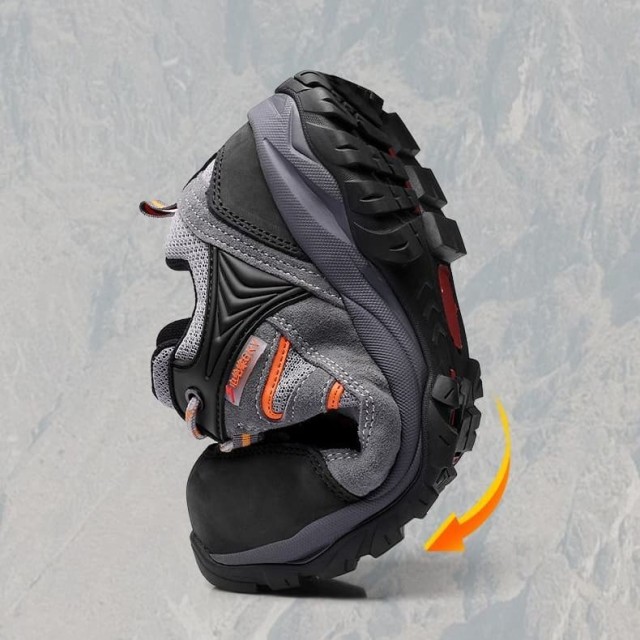Every step in ill-fitting work boots compounds stress on your feet—research shows 72% of occupational foot injuries originate from improper footwear. This guide reveals precision fitting techniques that prevent blisters, fatigue, and metatarsal injuries, tailored for high-risk environments.
Ensuring Ergonomic Fit in Work Boots
The Science of Foot Swelling and Boot Sizing
Feet expand up to 8% during prolonged standing. Measure feet at day’s end using these steps:
- Trace both feet on paper while bearing full weight
- Note the longer/wider foot’s dimensions
- Add 1/2 inch (≈1.3 cm) to the longest toe
Pro Tip: 3515’s ergonomic lasts accommodate swelling patterns common in construction and oilfield workers.
Measuring for Width: Beyond Standard Sizing Charts
Standard D-width boots fail 40% of wearers. Use a tailor’s tape to:
- Measure ball circumference
- Compare against manufacturer width tables (E=wide, EE=extra-wide)
- Test with orthopedic socks if required
Critical for metatarsal guard integration: A UK HSE study found proper width clearance reduces crush injury risk by 60%.
Toe and Heel Fit Tests for Hazard-Prone Environments
- Toe Box: Wiggle toes freely without touching sides
- Heel Lock: Heel lifts ≤1/4 inch (≈0.6 cm) when walking
- Flex Point: Boot bends at same location as your foot
Field Verification: Walk on inclined surfaces—proper fit prevents slippage in wet conditions.
The Break-In Period Demystified
How Break-In Time Varies by Material and Usage
| Material | Average Break-In | Key Consideration |
|---|---|---|
| Full-Grain Leather | 3-5 weeks | Stretches ≈5% widthwise |
| Composite Toe | 1-2 weeks | Minimal stretch; rely on padding |
Speed Up Break-In: 3515’s pre-conditioned leather boots reduce break-in by 50% versus industry averages.
Signs Your Boots Aren’t Adapting to Your Feet
- Persistent hot spots after 20 wear hours
- Asymmetric creasing patterns
- Numbness in toes (indicates nerve compression)
Solution: Use stretchers for targeted relief—never soak leather in alcohol-based products.
Proactive Maintenance for Sustained Fit
- Moisture Control: Rotate pairs daily to allow 24H drying
- Sole Inspection: Replace when tread depth drops below 1/8 inch (≈0.3 cm)
- Lacing Adjustments: Use surgeon’s loop technique for high arches
Longevity Hack: 3515’s triple-stitched welts withstand 2x longer than glued constructions in abrasive environments.
Ready for Fatigue-Free Shifts? 3515 engineers boots with anatomical lasts for distributors needing bulk orders of safety-certified footwear. [Contact our fit specialists] for volume pricing on breathable, hazard-ready designs.
Related Products
- Wholesale Customizable Suede Safety Boots - Puncture-Proof with Velcro Closure
- Puncture-Resistant Velcro Safety Boots for Wholesale & Custom Manufacturing
- Wholesale Classic Leather Lace-Up Ankle Boots for Brand Manufacturing
- Wholesale Durable Mid-Cut Tactical Boots for Custom & Private Label Brands
- Durable Mid-Cut Tactical Boots for Wholesale & Private Label
Related Articles
- How to Choose Work Boots That Balance Safety, Comfort, and Durability for Your Job
- Steel Toe Work Boots: Balancing Safety and Comfort for Demanding Jobs
- How to Extend Work Boot Lifespan: Science-Backed Care for Safety & Savings
- How to Choose Work Boots That Match Your Job's Safety Demands
- How to Choose Work Boots That Match Your Industry's Safety Needs



















